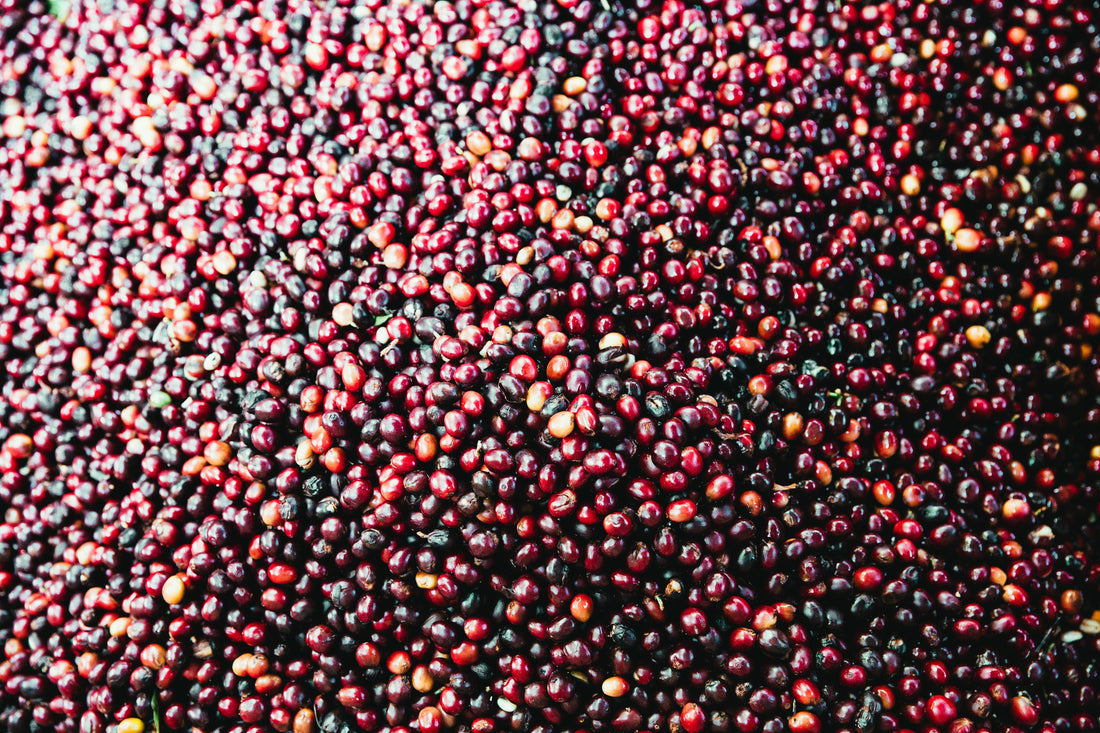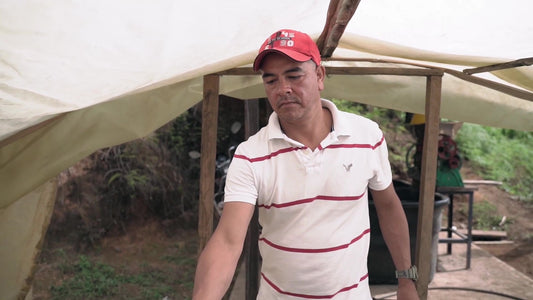The UK drinks over 98 million cups of coffee each day, 80% of which is instant coffee. So what about the other 20%? In the world of coffee enthusiasts and connoisseurs, "specialty coffee" stands out as a term that signifies more than just a simple cup of coffee. This article delves into what exactly makes coffee 'specialty,' exploring its defining characteristics, the rigorous standards it must meet, and why it is considered superior to regular coffee.
How is Specialty Coffee Defined?
What Standards Must Coffee Meet to be Considered Specialty?
Specialty coffee is distinguished by stringent standards that elevate it above ordinary coffee. The Specialty Coffee Association (SCA) stipulates that for coffee to be considered specialty, it must score 80 points or higher on a 100-point scale during sensory evaluation. This scoring is conducted by certified coffee tasters known as Q Graders who assess the coffee’s aroma, flavour, aftertaste, acidity, body, and overall balance.

What is Considered Specialty Coffee?
Specialty coffee refers to the highest grade of coffee available, which has been produced and processed to rigorous standards designed to enhance its character. Unlike commercial coffee, which often focuses on yield and cost-efficiency, specialty coffee prioritizes quality and taste.
What Criteria are Used to Classify Coffee as Specialty?
The criteria for classifying coffee as specialty include lack of defects, excellent flavour profile, and a high cupping score. The coffee must be carefully harvested, processed, and roasted to achieve distinctive taste profiles cherished in the coffee community.
Who Certifies Coffee as Specialty?
Certification is carried out by entities like the Specialty Coffee Association through licensed Q Graders who are trained to evaluate coffee meticulously. These graders follow a codified system to ensure each batch of coffee meets established quality standards. Becoming a Q Grader is no mean feat. You sit six days of exams and have to pass 21 sensory tests, correctly identifying 36 different aromas found in coffee. Some of the tests require you to identify the difference between two coffees from the same region but different farms! They even have to retest every three years to recalibrate!
What Attributes do Q Graders assess when assessing Specialty Coffee Beans?
Fragrance/Aroma
Fragrance and aroma refer to the smell of coffee, both dry and when infused with hot water. This attribute is assessed at three stages during the cupping: smelling the dry grounds, the aroma upon breaking the crust, and as the coffee steeps. Evaluators note the intensity and quality of the fragrance/aroma at each stage, using a 5-point vertical scale for intensity and a horizontal scale for quality. The overall score for this attribute reflects a combination of all three assessments.
Flavour
Flavour in coffee is the main character perceived by the taste buds, integrating all taste and retro-nasal aromas. It is assessed when the coffee is slurped vigorously to engage the whole palate. The evaluation considers the intensity, quality, and complexity of the taste and aroma. The score reflects these aspects, emphasizing the coffee’s main characteristics.
Aftertaste
Aftertaste refers to the flavours that linger in the mouth after the coffee has been swallowed or expectorated. A positive, long-lasting aftertaste scores higher, whereas a short or unpleasant aftertaste scores lower. This attribute is crucial for assessing the overall quality of the coffee's finish.
Acidity
Acidity is described in terms of brightness (positive) or sourness (negative). Good acidity contributes to a coffee's liveliness and fresh-fruit character. The score for acidity is based on its quality relative to the coffee's overall flavour profile, considering factors like origin characteristics and roast level.
Body
Body is evaluated by the tactile feel of the coffee in the mouth. Coffees with a heavier body may score higher if the sensation is pleasant. The score reflects the quality of the body, not just its intensity, with different expectations based on the coffee's origin or expected characteristics.
Balance
Balance assesses how well the coffee's flavours, aftertaste, acidity, and body complement or contrast each other. If the coffee lacks certain attributes or if some are overpowering, the balance score is reduced.
Sweetness
Sweetness in coffee is not directly analogous to sugary sweetness but refers to a pleasing fullness of flavour. Coffees that exhibit this attribute score higher, as sweetness enhances other flavour attributes and overall taste experience.
Clean Cup
A clean cup means the coffee is free of any off-flavours from the initial sip to the final aftertaste. This attribute is crucial for assessing the purity and clarity of the coffee's flavour profile.
Uniformity
Uniformity refers to the consistency of flavour across multiple cups of the same sample. If all cups exhibit the same flavour profile, the score for uniformity is higher.
Overall
The overall score allows panellists to provide a holistic evaluation of the coffee sample, integrating their impressions of all individual attributes. A coffee that meets or exceeds expectations in character and origin-specific flavours scores higher.
Defects
Defects are negative flavours that significantly detract from the coffee’s quality. They are categorized as taints (mild off-flavours) or faults (strong, overwhelming off-flavours). Evaluators classify and describe these defects, score their intensity, and note their impact on the total score. This assessment ensures that any detrimental flavours are duly noted and penalized.
In summary, the cupping process for specialty coffee involves a detailed and systematic evaluation of various sensory attributes, each contributing to the final score that determines whether the coffee meets the high standards required for specialty classification. This meticulous assessment process ensures that only coffee of the highest quality is recognized and appreciated as specialty coffee.
Specialty or Specialty Coffee?
Which is the Correct or More Commonly Used Spelling: "Specialty" or "Speciality"?
The spelling "specialty" is predominantly used in the United States and is the standard term within the global coffee industry. "Speciality" is more common in British English but is less frequently used in the coffee sector.
Does the Term Differ by Region or Country?
While the spelling may vary, the concept remains consistent worldwide. The term "specialty coffee" has been adopted globally to denote high-quality coffee that meets specific criteria.
What is the Difference Between Regular Coffee and Specialty Coffee?
What are the Main Quality Differences Between Specialty and Regular Coffee?
Specialty coffee is synonymous with exceptional quality, where each step of coffee production is handled with great care to enhance its natural flavours. Regular coffee might not meet these rigorous standards and often comes from mass production that prioritizes yield over flavour.
How Does the Flavour Profile Differ Between Specialty and Regular Coffee?
Specialty coffees offer complex and nuanced flavours that can include notes of fruits, flowers, and chocolates, which are absent in the more uniform and bland profiles of regular coffee.
What are Specialty Coffee Drinks?
Specialty coffee drinks are crafted from high-quality beans to enhance the beverage's overall taste and sensory experience. Examples include expertly brewed espressos, lattes, pour overs and other coffee house favourites where the unique characteristics of the coffee are the highlight.
What are Some Examples of Coffee Drinks Made Using Specialty Coffee?
From a perfectly balanced flat white to a delicate pour-over that showcases the coffee’s origin, specialty drinks focus on elevating the coffee experience and making sure that you notice the difference in quality.
How Do the Preparation Methods for These Drinks Enhance the Quality of Specialty Coffee?
Advanced brewing techniques like precise water temperature control, grind consistency, and optimal extraction times make a huge difference in highlighting the distinct flavours of specialty coffee. There’s a lot of science involved but the basics are about making sure that you extract the right flavours from the coffee to achieve the cup profile that best demonstrates the coffee’s unique characteristics. 
Why is Specialty Coffee Considered Better?
What are the Benefits of Drinking Specialty Coffee Over Regular Coffee?
Whenever we introduce a regular coffee drinker to specialty coffee, it’s fun to watch the initial scepticism about whether they will taste the difference turn into a eureka moment where they realise the range of flavours that specialty coffee can have. It’s often described as a totally different drink. Each specialty coffee has its own characteristics and it’s great fun to explore the diversity of coffee flavours that can be found in these humble little beans. Additionally, it supports sustainable practices in the coffee industry. We’re all about fighting for the little guy!
How Does the Production Process of Specialty Coffee Contribute to Its Superior Quality?
From selective handpicking of coffee cherries as they ripen to attentive processing and roasting by craft people who care about every single bean they look after, each step in the production of specialty coffee is designed to maximize flavour and ensure the highest quality. Every single, labour intensive action in the process from the hillside coffee farm, through the wash station, across the ocean to the roaster, and ultimately to the café or your home is done with care and a passion for delivering the best possible product.
What Factors Influence the Taste of Specialty Coffee?
How Do the Origin and Growing Conditions Affect the Flavour of Specialty Coffee?
The terroir, which includes the soil type, altitude, climate, and biodiversity of the region, plays a significant role in shaping the coffee’s flavour profile. It’s a bit like wine, but more complicated as there’s more processes involved.
What Role Does Roasting Play in Defining the Taste Profile of Specialty Coffee?
Roasting is crucial as it needs to be tailored to the specific bean’s characteristics to enhance its natural flavours without overpowering them. Roasters go to great lengths in specialty coffee to test and test again different roast profiles to make sure the coffee reaches its full potential from the bean’s innate characteristics and for the recommended brewing style the customer will use. Roasters in specialty coffee often roast to light or medium levels, to show off the unique flavour characteristics of the beans, whereas regular coffee is often dark roasted to ensure consistency in the flavour due to the larger volumes and sourcing beans from many different locations.
Where is Most Specialty Coffee Grown?
What Countries are Known for Producing the Highest Quality Specialty Coffee?
Coffee is usually grown between 25 degrees north of the equator and 30 degrees south, known as the coffee belt. Countries like Ethiopia, Colombia, Kenya, and Brazil are renowned for their high-quality specialty coffees, each offering unique flavour profiles influenced by their distinct coffee-growing conditions. Coffee can be grown in many other countries including: Angola, Burundi, Cameroon, Central African Republic, China, Costa Rica, Cuba, Democratic Republic of Congo, Dominican Republic, Ecuador, El Salvador, Gabon, Ghana, Guatemala, Guinea, Haiti, Honduras, India, Indonesia, Ivory Coast, Jamaica, Laos, Liberia, Madagascar, Malawi, Mexico, Nepal, Nicaragua, Panama, Papua New Guinea, Paraguay, Peru, Philippines, Rwanda, Sierra Leone, Tanzania, Thailand, Timor Leste, Togo, Trinidad and Tobago, Uganda, United States (California, Hawaii, Puerto Rico), Venezuela, Vietnam, Yemen, Zambia, Zimbabwe.
What Unique Characteristics Do These Regions Impart to Their Coffee?
Each region brings a signature flavour to its coffee. Ethiopian coffees are often floral and fruity, while Colombian coffee might have notes of nuts and chocolate, attributed to the regional climate and soil conditions.
How Does the Processing Method Affect Specialty Coffee?
What are the Different Methods of Processing Coffee?
Key methods include washed, natural, and honey, each affecting the coffee’s final taste. Washed coffees are clean and vibrant, naturals are fruity and full-bodied, and honey-processed coffees strike a balance with sweet, mild flavours.
The washed coffee processing method, also known as the wet process, is a technique used to prepare coffee beans for drying. This method involves several steps to remove the outer fruit layers from the coffee beans before they are dried. The process includes:
- Harvesting: Coffee cherries are picked from coffee plants, generally by hand to ensure that only ripe cherries are selected.
- Pulping: Soon after harvesting, the outer skin of the cherries is removed using a machine known as a pulper, which squeezes the cherries to extract the beans, leaving most of the mucilage (a sticky, sugary layer) still attached to the beans.
- Fermentation: The pulped beans are then placed in fermentation tanks for several hours to a few days. During fermentation, naturally occurring microbes break down the mucilage surrounding the beans. The duration of fermentation varies depending on ambient temperature and the amount of mucilage on the beans.
- Washing: After fermentation, the beans are washed with large quantities of water to remove the loosened mucilage. This step is crucial as it stops the fermentation process and cleans the beans of any remaining pulp.
- Drying: The washed beans are then spread out in thin layers to dry, either on large patios under the sun or in mechanical dryers if the climate is not suitable. The beans must be raked regularly to ensure they dry evenly and prevent mould or over-fermentation.
- Milling: Once the beans have dried to an appropriate moisture content (usually about 10-12%), they undergo further processing to remove the parchment layer (a papery husk around the bean), and sometimes also a thin membrane called the silver skin.
The natural coffee processing method, also known as the dry process, is one of the oldest methods of processing coffee and is relatively simple but requires careful attention to detail to ensure quality. The process includes:
- Harvesting: Coffee cherries are harvested, typically by hand, ensuring that only the ripest cherries are picked. This is crucial since overripe or underripe cherries can negatively affect the flavour of the coffee.
- Drying: Immediately after harvest, the whole cherries are spread out in a thin layer on large surfaces (usually raised beds or concrete patios) to dry under the sun. This step is critical and can take several weeks. The cherries must be raked and turned regularly throughout the day to prevent mould, fermentation, or rotting, and covered at night or during rain.
- Monitoring Moisture Content: The cherries are dried until they reach an optimal moisture content, usually around 10-12%. This stage is vital as the moisture level directly affects the quality and shelf life of the stored coffee.
- Milling: Once the cherries are properly dried, they are milled to remove the dried outer skin, pulp, and parchment layer in one step. This reveals the coffee beans, which are still encased in a thin, papery husk called the silver skin.
- Sorting and Packing: The beans are then sorted, often by hand, to remove any damaged or defective beans and then graded according to size and weight. Finally, they are packed for export.
The honey coffee processing method, often seen as a hybrid between the washed and natural processes, is a distinctive method that derives its name from the sticky, honey-like feel and appearance of the mucilage left on the coffee beans during drying. The steps include:
- Harvesting: Similar to other methods, coffee cherries are harvested by hand, focusing on choosing only the ripest cherries to ensure uniformity and quality.
- Pulping: The harvested cherries are mechanically pulped to remove the outer skin. Unlike the washed process, in the honey method, some or all of the mucilage (the fruity, sticky layer beneath the skin) is left on the beans.
- Drying: The mucilage-coated beans are then spread out to dry, typically on raised beds that allow for air circulation around the beans. The level of mucilage left on the beans can vary, leading to different classifications of honey process such as yellow, red, and black honey, based on the amount of mucilage and exposure to sunlight. Each type requires different handling and drying times.
- Monitoring and Raking: Throughout the drying process, which can last from several days to a few weeks depending on conditions and the desired profile, the beans need to be regularly turned and raked. This step is crucial to prevent mould, over-fermentation, and to ensure even drying.
- Milling: Once the beans reach the appropriate moisture content (usually around 10-12%), they are milled to remove any remaining dried mucilage as well as the parchment layer encasing the bean.
- Sorting and Grading: Finally, the beans are sorted and graded by size, weight, and quality. Any defects or inconsistencies are removed to ensure only the best beans are packaged and shipped.
How Do These Methods Influence the Final Taste and Quality of the Coffee?
The method chosen can highlight different aspects of the coffee's flavour, from enhancing its natural sweetness to accentuating fruit-like qualities.
The washed process is favoured for its ability to produce a clean cup of coffee with enhanced clarity and brightness, allowing the coffee's natural flavours and acidity to shine through. This method is particularly popular for high-quality Arabica beans that benefit from highlighting their intrinsic flavour profiles.
Natural processing is known for producing coffees with a full body and complex flavour profiles, often with a sweet, fruity character. This is because the sugars and flavours from the cherry’s pulp are absorbed into the bean during the drying process. However, this method can also lead to greater variability in flavour due to the high risk of over-fermentation or uneven drying, making careful monitoring essential throughout the process. Natural processed coffees are particularly popular among specialty coffee producers in regions where water resources are scarce, as this method does not require water.
The honey process is valued for its ability to impart unique flavour profiles into the coffee, often enhancing body and sweetness, while maintaining some of the bright acidity typically lost in the natural process. The nuances in flavour can be attributed to the amount of mucilage left on the beans, influencing how sugars and other compounds interact during drying. This method is environmentally friendly compared to the washed process since it uses less water, yet it requires meticulous attention to detail to manage the risk of spoilage due to the high sugar content exposed during drying.
What Certifications are Common for Specialty Coffee?
What are the Most Recognized Certifications in the Specialty Coffee Industry?
Certifications such as Fair Trade, Organic, and Rainforest Alliance are prevalent, each ensuring that the coffee meets specific standards of quality and sustainability.
How Do These Certifications Impact the Perception and Price of Specialty Coffee?
These certifications often elevate the perceived quality and can justify higher prices due to the guaranteed ethical and environmental stewardship they represent.
How Can I Brew Specialty Coffee at Home?
What Equipment is Recommended for Brewing Specialty Coffee at Home?
There are hundreds of different pieces of coffee making equipment from cheap and cheerful to break the bank expensive. For the best results, using a high-quality burr grinder, a precise scale, and a method like pour-over or French press is recommended to control the brewing variables effectively.
Are There Specific Brewing Techniques That are Best Suited for Specialty Coffee?
Techniques that allow for precise control over extraction, such as adjusting the water temperature and brew time, are ideal for maximizing the potential of specialty coffees. We always recommend trying the pour over method if you’re thinking about getting into specialty coffee at home before thinking about a home espresso set up as it’s more affordable and produces and amazing cup of coffee.

What are the Price Differences Between Specialty and Regular Coffee?
How Much More Does Specialty Coffee Typically Cost Compared to Regular Coffee?
It’s difficult to quantify accurately but specialty coffee generally costs more due to its higher quality, the complexity of its production processes, and its traceability. But in a world where people are becoming ever more conscious of the environmental and social impacts of their purchases, or even thinking about reducing their caffeine consumption, most specialty coffee is a relatively affordable treat, particularly if you brew at home if you compare it to what you might pay on the high street for a regular coffee.
What Factors Contribute to the Higher Price of Specialty Coffee?
Specialty coffee production is low yield-high demand and is a very labour intensive process compared to regular coffee production. There’s also the ethical component to think about with the specialty coffee industry working hard to ensure that everyone is fairly compensated within the supply chain (more work to do). All these factors and more contribute to the relatively higher costs.
What Types of Beans are Used in Specialty Coffee?
What are the Most Common Species of Coffee Beans Classified as Specialty?
There are two main coffee species, the Robusta and the Arabica bean. Arabica beans are predominantly used in specialty coffee due to their superior flavour profiles but are the minority in terms of total coffee production globally. Varietals of the arabica species such as Geisha, Bourbon, and Typica are especially prized for their unique tastes.
How Does Arabica coffee Differ from Robusta Used in Regular Coffee?
Arabica and Robusta are the two most commonly cultivated species of coffee and have distinct differences that affect both their cultivation and the flavours they bring to your coffee cup. Here’s a closer look at how Arabica coffee differs from Robusta:
Flavour Profile
Arabica: Known for its smooth, complex flavour profiles, Arabica coffee often features a wide range of aromas and tasting notes, such as fruits, nuts, chocolate, and sugar. It typically has a higher acidity, which contributes to its brightness and can enhance its aromatic qualities.
Robusta: Robusta coffee tends to have a stronger, harsher taste compared to Arabica, with a grainier, nuttier, and earthier flavour. It is often described as having a woody or peanutty quality during brewing and possesses a lower acidity, which can sometimes come off as flat or bland.
Caffeine Content
Arabica: Generally contains less caffeine, usually about half the caffeine of Robusta beans. This lower caffeine content helps in producing a smoother and less bitter taste.
Robusta: Contains higher levels of caffeine, which not only makes it more bitter but also provides a greater resistance to diseases and pests. The high caffeine content is a natural insect repellent, aiding in the robustness of the plant—hence its name.
Plant Characteristics
Arabica: Arabica plants are typically more sensitive to the environment and require cooler, subtropical climates with rich soil, adequate moisture, and shaded sun. They are mostly grown at higher altitudes (600-2,000 meters), primarily in Latin America, Eastern Africa, Asia, and Arabia.
Robusta: Robusta plants are hardier and can thrive at lower altitudes and warmer climates. They are more disease-resistant and can be cultivated in harsher conditions with less water. This makes them easier and cheaper to cultivate. Major Robusta producers include Vietnam, Brazil, and parts of Africa.
Bean Shape and Chemical Composition
Arabica: The beans are generally more oval and elongated, with a curved crease. Arabica beans have a higher concentration of sugars and oils, which largely contributes to their flavour complexity and smoothness.
Robusta: Robusta beans are smaller and rounder with a straighter crease. They tend to have higher concentrations of certain compounds that produce a more bitter flavour.
Price and Use
Arabica: Typically more expensive due to its preferred taste and the more delicate conditions required for its cultivation. Arabica beans are predominantly used in specialty and high-grade coffee products.
Robusta: Less expensive and often used in lower-grade, mass-market products. Due to its strong flavour and higher caffeine content, it is commonly used in espresso blends to enhance body and crema.
Are There Environmental Benefits to Choosing Specialty Coffee?
How Does the Cultivation of Specialty Coffee Impact the Environment?
Specialty coffee often promotes sustainable agriculture that helps preserve the ecosystem, such as using less water and avoiding harmful pesticides.
Are There Sustainable Practices Commonly Used in the Production of Specialty Coffee?
Yes, practices such as shade-growing, organic farming, and maintaining soil health are common among specialty coffee producers, aiming to enhance biodiversity and reduce environmental impact.
How Do Coffee Roasters Source Their Specialty Coffee?
How do Coffee Roasters select the coffees they will sell?
Coffee roasters select green coffees through a detailed process that aims to ensure the quality and flavour profile of the final product aligns with their brand's standards and customers' expectations. Here’s how the selection process typically unfolds:
1. Cupping and Tasting
The primary method for selecting green coffee is cupping, a standardized method of tasting and evaluating coffee beans. Roasters regularly cup samples from different growers and regions to assess their quality. During cupping, roasters look for specific flavour attributes, body, acidity, sweetness, and aftertaste, among other characteristics. This process helps in identifying coffees that meet their desired flavour profiles and quality standards.
2. Understanding the Coffee's Origin
Knowledge of where the coffee is grown is crucial. Factors such as the country, region, altitude, and the type of soil influence the taste and quality of coffee beans. Roasters often select beans based on these geographic indications because they are associated with specific flavour profiles that consumers expect from coffees from those regions.
3. Building Relationships with Farmers
Many roasters establish direct relationships with coffee farmers or cooperatives. These relationships can provide more in-depth knowledge about the farming practices, the handling of the beans post-harvest, and even allow roasters to have some influence over these processes. Direct trade often ensures a consistent quality and allows roasters to access the best beans from the farm.
4. Seasonality
Coffee is an agricultural product, so its availability and quality can vary with seasons and harvest cycles. Roasters need to be aware of the harvesting periods in various coffee-producing regions to time their purchases, ensuring they’re getting the freshest and highest quality beans.
5. Sustainability and Ethics
Increasingly, roasters are also looking at the sustainability of the coffee production methods. This includes considering environmental impacts, the carbon footprint of coffee production, and social factors such as fair payment and working conditions for farmers and labourers. Certifications like Fair Trade, Rainforest Alliance, and Organic can influence a roaster's decision to select a particular green coffee.
6. Sample Roasting
Once a potentially suitable green coffee has been identified through cupping, roasters often conduct a sample roasting. This smaller-scale roast lets them test how the coffee performs in the roast, revealing more about its characteristics and how it might fit into their product lineup.
7. Cost and Availability
The cost is a practical consideration that roasters cannot overlook. The price needs to be balanced with the quality, taking into account the target market and price point of the final coffee product. Availability is also crucial; roasters need to ensure that selected coffees are available in sufficient quantities to meet demand.
8. Consumer Preferences and Market Trends
Ultimately, roasters select coffees that will appeal to their customers. This means keeping in touch with consumer preferences and broader market trends, which can vary widely from one market to another. For example, some markets may prefer lighter, more acidic coffees, while others might favour full-bodied, darker roasts.
What Considerations Do Coffee Shops Have When Choosing Their Specialty Coffee Suppliers?
Coffee shops typically look for suppliers who consistently provide high-quality beans with ethical sourcing practices at a price that is sustainable for their business. Selecting coffee begins with reviewing what is available at the supplier and tasting the coffee to understand its unique flavour profile. Coffee is a people business so working with suppliers who share your values and are great people to work with is often the difference between working with a supplier or not.
How Do Coffee Roasters and Cafes Ensure the Quality and Consistency of the Coffee They Serve?
They often establish direct trade relationships with producers, perform regular cuppings, and train staff extensively to maintain high standards in every cup. The whole ethos in specialty coffee is about quality and so a business that doesn’t take great care in maintaining it quality and consistency very quickly finds it’s not in business. We also drink (“quality assure”) a lot of coffee!







